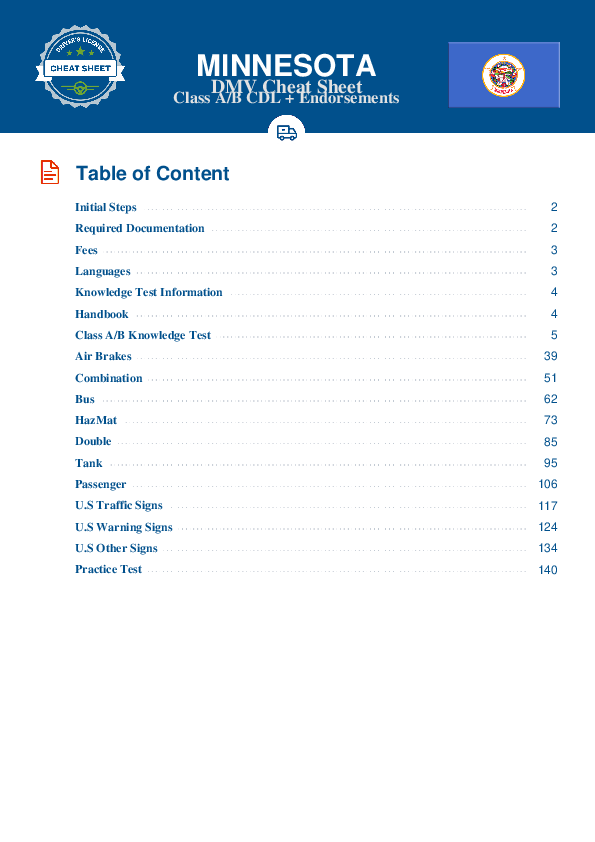Bus Driver Testing | Minnesota 2025 #2 Page 3 of 3
Train for FREE online with our MN bus CDL test. The official exam test consists of several obligatory parts, with all of them checking your knowledge of different blocks of road rules. If you need to obtain a license in Minnesota in 2025, learn how to become a bus driver and then practice as much as possible. Free sample tests published on our website will help you check and improve your knowledge and boost your grades. Please bear in mind that DMV requirements for a bus driver may vary from state to state.
15 . When should a turn signal be canceled by a driver?
If your vehicle does not have self-canceling turn signals, be sure to cancel your turn signal after completing a turn.
16 . Header boards are used to protect the driver from cargo in the event of a crash.
The function of a front-end header board (also called a "headache rack") is to protect the driver from being injured by moving cargo in the event of a crash or sudden stop.
17 . When other vehicles have trouble seeing you at dawn or dusk, you can increase your visibility by:
At dawn or dusk, and in snowy or rainy conditions, you should turn on your headlights to make it easier for other road users to see your vehicle.
18 . The person responsible for the safe transport of cargo is the driver.
The driver of a vehicle is responsible for the safe transport of its cargo, regardless of who loaded the vehicle.
19 . Drivers often tailgate trucks in bad weather.
It is common for automobile drivers to follow too closely behind large trucks in bad weather, especially when it is difficult to see down the road. Safely respond to the tailgater instead of reacting by increasing your speed.
20 . The person loading the cargo is responsible for keeping the truck from being overloaded.
Regardless of who loaded cargo onto a vehicle, it is the driver's responsibility to inspect the cargo. This includes checking for overloads.
See the exact questions that will be on the 2025 Minnesota DMV exam.
99.2% of people who use the cheat sheet pass the FIRST TIME
Lillian MCcranie explains how our CDL study guide was helpful in passing the exam and recommends it to everyone.
Cameron tells us how he purchased the CDL exam, and found it to be a useful tool which helped him pass the exam and find a job.



